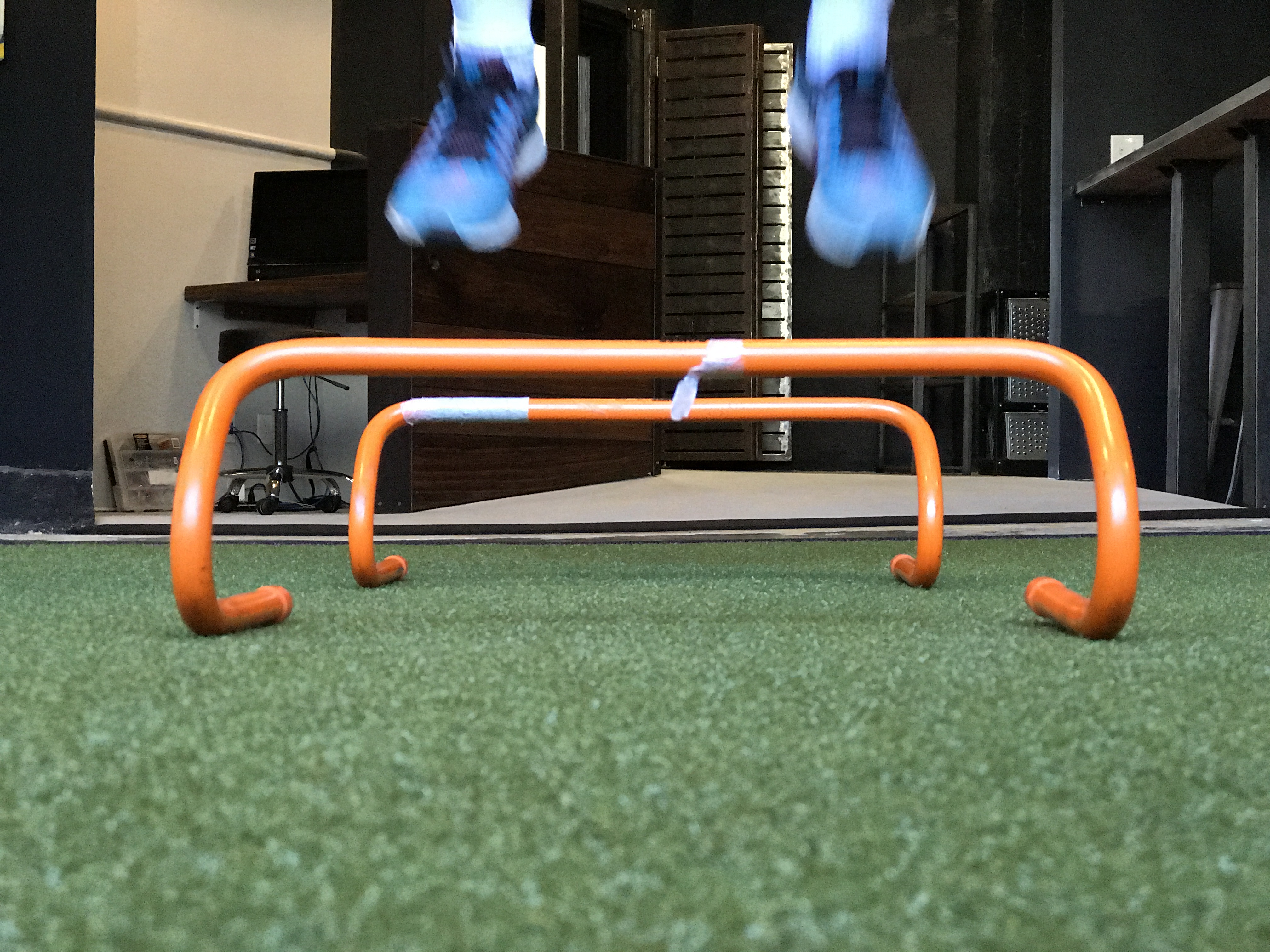Soccer Quickness Drills

Speed and agility skills are important for soccer players to learn in order to improve their multi-directional speed. With or without the ball, the main goal of increasing a player’s quickness is to maximize performance and react faster than an opponent. Introducing agility basics early allows players to establish a solid set of techniques before increasing the complexity of the drills down the road. There are many soccer-specific progression drills that players can do to increase their quickness on the field and reduce the risk of injury.
5-Dot Hopscotch Drill
Five-dot hopscotch is an easy and basic drill for beginner level players to start with. When completing the exercise, players should focus on landing with the balls of their feet rather than being flat-footed. Creating impact on the balls of the feet provides players with the ability to quickly make and adjust to future movements. This drill should be quick, controlled, and well-balanced.
3-Hurdle Drill
Progressing slightly to a more advanced exercise, the 3-hurdle drill requires athletes to hop over a set of hurdles with minimal touch in between each. For soccer players specifically, it’s important to practice moving laterally to prepare for constant directional changes on the field. The quicker a player can move, the higher their chance is of beating an opponent to the ball.
Full Slalom Ladders
In order to complete the third progression drill, athletes must remain on the balls of their feet. It is nearly impossible to properly perform the entirety this drill if a player isn’t well-balanced throughout their body. The reverse aspect of the full slalom ladders encourages players to execute more front facing plays rather than turning their back and missing an opportunity.
T-Drill (Left and Right)
T-drills combine the previous progression techniques and assist in increasing a player’s individual strength. Strength goes hand in hand with quickness which oftentimes separates players from being good to great. The t-drill is a great way to continue practicing quick directional changes while increasing the difficulty of the position. Moving forward, side-to-side, and backwards in a squat position produces and increases a player’s quad strength. To minimize the risk of injury in this stage the athlete should ensure that their foot is planted before switching directions. With experience and practice, the speed at which this drill is executed should increase along with the number of repetitions.
Recap
These four drills are proven to assist soccer players in developing strength and agility during practices and games. Using this progression allows athletes to advance their previous skills while building new ones and preventing injury. All soccer players, regardless of level, can find ways to increase their multi-directional speed and beat their opponents.
Related Posts

The Best Bench Press Variation You’re...
This post is part of our Coaches Corner series with Taylor Rimmer. Taylor is NSCA-CPT, StrongFirst...

Does Powerlifting Harm Heart Health?
A recent study has discovered that a 12-week supervised strength training program (SSTP) may result...
-1.png)
Barefoot Running: Is It For You? |...
Run Free: Consider Less Cushion
Updated October 2020:
With more athletes looking for ways to...


